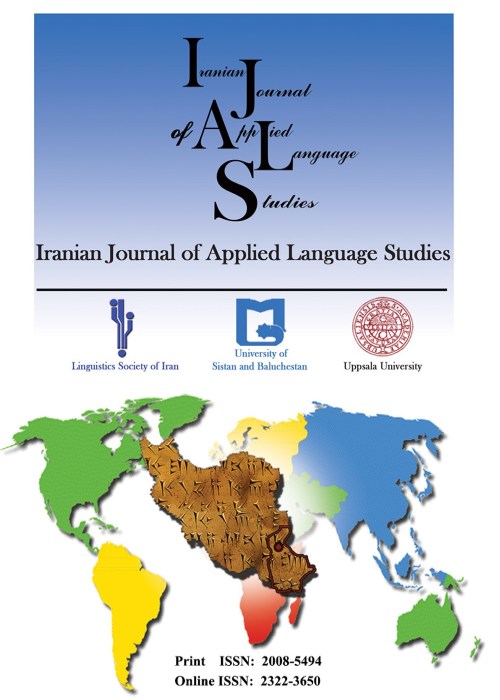An Analysis of Persian Compound Nouns as Constructions
Author(s):
Abstract:
In Construction Morphology (CM), a compound is treated as a construction at the word level with a systematic correlation between its form and meaning, in the sense that any change in the form is accompanied by a change in the meaning. Compound words as one type of complex words are coined by compounding patterns or templates which are called abstract schemas in CM. These abstract constructional schemas generalize over sets of existing compound words and specify how new compound words can be created. The schemas dominate the compounds so that these words inherit all predictable morphological and semantic properties from these schemas. In fact, this is mainly the constructional schema which determines the properties for every compound word not individual constituents of a compound word. Therefore, the form and meaning of a compound, as a whole, are affected by formal and semantic/syntactic properties of the construction itself. Also, the dominance of schemas and subschema as over the compound words reinforces the idea of hierarchical lexicon. In addition, CM adopts a paradigmatic approach to word formation; that is, the creation of new compound words is caused by the extension of a systematic form-meaning relationship in a set of existing compound words to new cases resulting in new compound words. Regarding these properties of CM, This paper aims to study one type of Persian compounds, that is, compound nouns in the framework of Construction Morphology. From this perspective, two types of compound nouns including endocentric and exocentric compound nouns are treated in a rather similar way because the compound noun construction as a holistic schema plays the main role in specifying the syntactic features, head(if any) and semantic content of compound nouns, not their constituents. According to findings of this study, the analysis of Persian compound nouns based on this model increases the degree of generality in compound noun formation and develops the concept of holisticity in the form and meaning of compound nouns as well as it highlights the paradigmatic relationship in Persian compound noun formation templates.
Keywords:
Language:
English
Published:
Iranian Journal of Applied Language Studies, Volume:9 Issue: 1, Spring 2017
Pages:
27 to 56
magiran.com/p1697401
دانلود و مطالعه متن این مقاله با یکی از روشهای زیر امکان پذیر است:
اشتراک شخصی
با عضویت و پرداخت آنلاین حق اشتراک یکساله به مبلغ 1,390,000ريال میتوانید 70 عنوان مطلب دانلود کنید!
اشتراک سازمانی
به کتابخانه دانشگاه یا محل کار خود پیشنهاد کنید تا اشتراک سازمانی این پایگاه را برای دسترسی نامحدود همه کاربران به متن مطالب تهیه نمایند!
توجه!
- حق عضویت دریافتی صرف حمایت از نشریات عضو و نگهداری، تکمیل و توسعه مگیران میشود.
- پرداخت حق اشتراک و دانلود مقالات اجازه بازنشر آن در سایر رسانههای چاپی و دیجیتال را به کاربر نمیدهد.
In order to view content subscription is required
Personal subscription
Subscribe magiran.com for 70 € euros via PayPal and download 70 articles during a year.
Organization subscription
Please contact us to subscribe your university or library for unlimited access!


